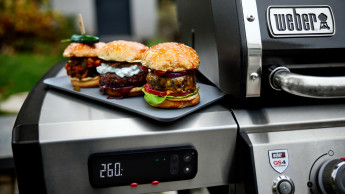A study has put consumer behaviour in the specific sub-sections of garden tools and plastic plant pots under the microscope. It is not special offers or stockpiling purchases that leave their mark on turnover, but purchases made as required. Business leaps ahead when nature awakens once more
Switzerland has around 2.8 mio “gardeners”
According to the results of the survey, 43 per cent of the population from both the German-speaking areas and French-speaking western Switzerland between the ages of 15 and 74 own a garden, and a further 12 per cent make use of a garden. The figures are lower in the west than in the German-speaking part. When extrapolated onto the country as a whole, this amounts to 2.8 million persons or one million households. Most garden owners are to be found in the country (58 per cent), in households with a gross income in excess of CHF 9 000 (58 per cent) and among older couples (54 per cent). The following segments of the population are least likely to be found in a garden: young singles (78 per cent excluding garden users), young couples without children and older singles (64 per cent), households with an income below SFR 6 000 (56 per cent, mainly living in rented accommodation). Eighty-four per cent of Swiss amateur gardeners have their garden on the piece of land where they live. Allotment or family gardens are principally used by relatively young individuals and by households with a gross income below CHF 6 000. Forty-four per cent of garden owners and users have purchased gardening tools or ornamental plastic pots over the last 12 months. This amounts to approx. 1.2 mio persons in total. 530 000 persons purchased garden tools only, 200 000 plastic plant pots only, and 470 000 purchased both.
Needs rather than stockpiles
Plant pots and containers (not only plastic) are handed over the counter rather more frequently than garden tools. Forty-five per cent of those questioned purchase pots at least twice a year, and a further 36 per cent once a year. The corresponding figures for garden tools are 35 per cent twice yearly and 34 per cent once yearly. The annual budget for garden tools at an average of CHF 133 is somewhat higher than for pots and containers at CHF 109. Shoppers making their purchases in specialist stores or up-market hypermarkets tend to spend slightly more money. Garden tools and plant pots are bought by the great majority (94 per cent) as required, not for building up a stock. Though 20 per cent do still lay in stocks in western Switzerland. Only 30 per cent of respondents who today buy according to need would also stock up with garden tools and pots in general, given the appropriate special offers.
Where and why are purchases made?
In Switzerland, 30 per cent of amateur gardeners get their supplies of gardening tools and planters from traditional specialist retailers. The remainder frequent large-format stores and the agricultural cooperatives. The most important reason for the choice of shopping channel is clearly the location of the business, followed by the product assortment and product quality. Customer advice, the range available and product quality constitute the particular strengths of the specialist retailers. The special potential of the other channels lies in their pricing, breadth of range, special offers, location and a personal relationship with customers. The most important source of information is brochures that are sent by post (56 per cent). Around 40 per cent of garden enthusiasts are encouraged to make purchases by information on product labels, through personal advisory services or acquaintances or the newspaper. Brochures displayed in the shop are crucial for 27 per cent of respondents. TV advertising is mentioned by only 16 per cent. The four per cent of customers who named garden business through the internet is an extremely low figure, since it is mentioned as a source of information for other topics by over 30 per cent of consumers.
What do consumers expect from garden tools?
The following points are considered important when purchasing gardening tools: the quality of the product (general quality 38 per cent, sturdy construction 29 per cent, durability 12 per cent, good material 4 per cent), practical operation (32 per cent, meets requirements 10 per cent) and the price (price 23 per cent, cost effectiveness 12 per cent). A further unprompted question on the significance of the concept of “quality” in gardening tools shows that they must be solid (46 per cent), long lasting (46 per cent), practical to use (31 per cent), made of good material (16 per cent) and weatherproof (14 per cent). Brand names do not play any vital role when making the decision to purchase, according to the survey.
What do consumers want from their plant pots?
points are described as important when buying pots and containers (general): external appearance (attractive design, the clear leader at 49 per cent of nominations, suitable colour 18 per cent, right size 11 per cent) and quality-related aspects (frost-resistant for winter use 17 per cent, good material 14 per cent, quality in general 13 per cent, robust 9 per cent, long life 8 per cent). Women find suitability of colour significantly more important than men. Pots made of clay/terracotta are spontaneously recognised by 91 per cent of respondents. Plastic pots achieve a score of 75 per cent, pots made of (natural) stone 29 per cent. Only 63 per cent of men are familiar with plastic plant pots. When it comes to the material preferred, pots made of clay/terracotta top the list by a long way. However, the following points speak in favour of plastic pots: their lighter weight, the fact that they are less fragile, and the attractive designs that are available. The opinions of consumers against the use of plastic plant pots can be divided into three categories, which overlap to some extent: unnaturalness, material, appearance.
Conclusions
With the reawakening of life comes the urge to put one’s garden in order. It is a matter of taking advantage of this collective impulse and fulfilling gardeners’ wishes comprehensively, with delivery times that are minimal and good-quality advice and materials. It is not prices, special offers or bargains that play the major role here, but product availability. The inclination to wait seems to be in particularly short supply in the springtime. In a nutshell: When 2.8 mio garden fans spring into action in the space of just a few days, everything must be prepared to make the most of this enthusiasm – to the retailer’s own advantage.
Annual budget for garden tools and plant pots/containers(.pdf-Datei zum Herunterladen)
“Why do you shop for garden tools or plant pots at a specialist retail outlet”?(.pdf-Datei zum Herunterladen)
Attitude to sales campaigns when buying garden tools and plant pots/containers(.pdf-Datei zum Herunterladen)
This article first appeared in the Swiss trade magazine “perspective” (No. 14/15 04). These extracts are published with the kind permission of the publishers.

 Menü
Menü















